To reach Horyuji Temple from JR Nara Station, take the Yamatoji Line to Horyuji Station (12 minutes, 230 yen). From there, it’s a 20-minute walk or a short bus ride (bus number 72, 190 yen, every 20 minutes). Get off at the Horyujisando bus stop.
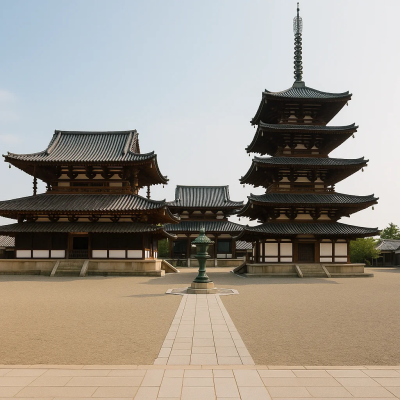
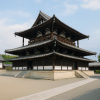
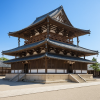
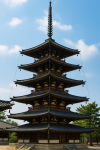
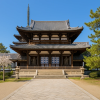
Horyuji Temple
Hōryūji Temple (法隆寺), is one of Japan’s most treasured landmarks and a UNESCO World Heritage Site renowned for its astonishing combination of architectural preservation and spiritual significance. Founded in 607 by Prince Shōtoku—an early advocate of Buddhism and a pivotal figure in shaping Japan’s religious and philosophical identity—Hōryūji is home to the world’s oldest surviving wooden buildings. The temple grounds are divided into two main areas: the Western Precinct (Saiin Garan) and the Eastern Precinct (Tōin Garan). The Western Precinct includes the Chūmon (central gate), the Kondō (main hall), and the iconic five-story pagoda, all dating from the Asuka Period (538–710). These ancient structures have endured centuries of earthquakes, fires, and time, yet still retain much of their original form, offering a rare and awe-inspiring glimpse into Japan’s earliest Buddhist architecture. Inside, visitors encounter some of the oldest extant Buddhist sculptures in the country, including serene bronze images of Shakyamuni and Bodhisattvas, making the precinct a place of not only great beauty but also profound historical and spiritual importance.
To the east lies the Eastern Precinct, centered around the Yumedono (Hall of Dreams)—an elegant octagonal hall constructed in 739 and dedicated to the memory of Prince Shōtoku. This sacred hall enshrines a mysterious statue of the prince known as the Guze Kannon, long kept hidden from public view. Nearby, the Gallery of Temple Treasures showcases a remarkable collection of Buddhist relics, ritual objects, and artwork, many designated as National Treasures or Important Cultural Properties. Just beyond the Eastern Precinct stands Chūgūji Temple, once the residence of Prince Shōtoku’s mother and now home to a graceful seated statue of Miroku Bosatsu (Maitreya), renowned for its gentle smile and refined form. For those unable to visit Nara, the Hōryūji Treasure Gallery at the Tokyo National Museum offers an exceptional opportunity to connect with the temple’s legacy, exhibiting sculptures, textiles, and ceremonial objects originally entrusted to the imperial household. Whether in Nara or Tokyo, Hōryūji offers a profound encounter with the spiritual origins of Japanese Buddhism and the artistic brilliance of its formative eras.
Hours and Fees
- Opening hours
-
8:00 to 17:00 (until 16:30 from early November to late February)
- Closed
-
No closing days
- Entrance fee
-
1500 yen (2000 yen from March 1, 2025)
- Opening hours
-
9:00 to 16:30 (until 16:00 from October to late March) (admission ends 15 minutes before closing)
- Closed
-
No closing days
- Entrance fee
-
600 yen
Getting there
Google MapsResources
Reviews
There are no reviews